In many countries, assistance dogs for various medical purposes have long been widely used. These dogs provide active physical and psychological assistance, can monitor the health of their owner, provide emotional and psychological support. This classification is a compilation of world experience in the use of specially trained assistance dogs and assistance dogs to help people with disabilities, various physical disabilities and diseases, with a brief description of the functions that these dogs perform:
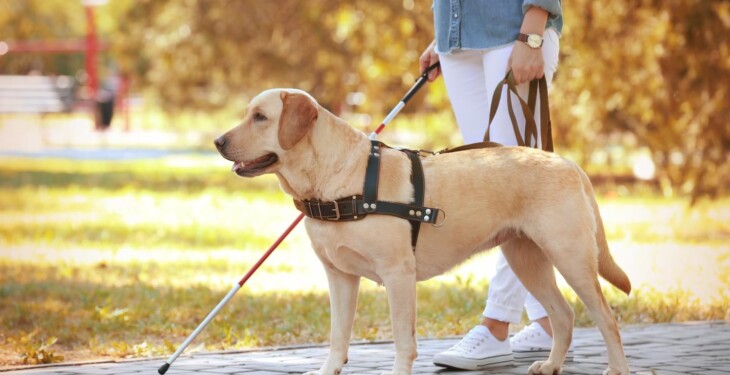
Source: Transport for Wales
Assistance Dogs
1. Service Dogs
Assistance Dogs for People With Physical Disabilities Other Than Sight or Hearing:
1.1. MOBILITY SERVICE DOGS or BRACE / MOBILITY SUPPORT DOGS are dogs that provide assistance in movement: towing a stroller, support when walking, support in case of loss of balance, in cases of uncertain gait with cerebral palsy and other diseases. Also, their functions are often supplemented by the functions of Wheelchair Assistance Dogs (paragraph 1.2)
1.2. WHEELCHAIR ASSISTANCE DOGS – assistance dogs for people in wheelchairs. They pick up objects, bring things, open and close doors, turn lights on and off, and perform many other functions.
1.3. MEDICAL ALERT SERVICE DOGS and MEDICAL RESPONSE DOGS – medical alarm and warning assistance dogs. They sense physiological changes in their host’s body and warn of the approach (onset) of a problem (fainting, the onset of a diabetic coma, epileptic seizures).
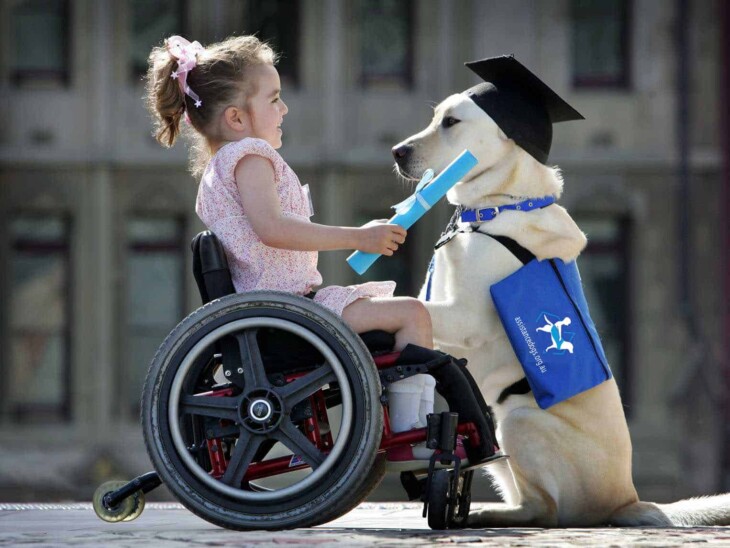
Source: MyGivingCircle
1.3.1. DIABETES ALERT DOGS – assistance dogs for people with diabetes. Trained to detect high (hyperglycemia) or low (hypoglycemia) blood sugar levels in people with diabetes and to alert their owners to dangerous changes in blood glucose levels.
1.3.2. SEIZURE ALERT DOGS – assistance dogs for people with epilepsy. Warn their owner about the onset of an epileptic seizure. The owner has time to take measures to prevent an attack, to have time to take a comfortable body position so as not to fall.
SEIZURE RESPONSE DOG – dogs that help people with epilepsy immediately during seizures and immediately after seizures. Their functions: help to take the right body position during an attack and convulsions, stimulate a person to wake up after an attack, help rise after an attack, call for help, bring a phone, press the panic button.
1.3.3. ASTHMA ALERT DOGS – assistance dogs for people suffering from asthma or chronic obstructive pulmonary disease. They inform their owners in advance about the onset of an asthma attack, so that there is time to take measures to prevent the attack, they are trained to bring an inhaler. In addition, they can wake up someone suffering from bad breathing or alert others to urgent medical attention.
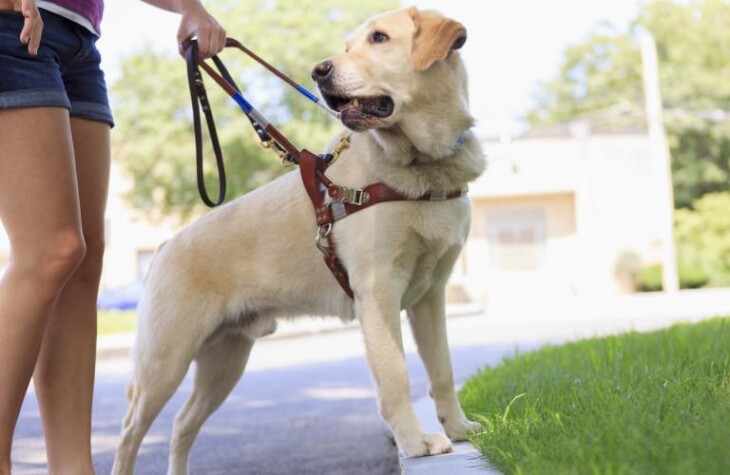
Source: Healthgrades
1.3.4. CARDIAC ALERT DOGS – assistance dogs for people with heart disease. Trained to alert the wearer to impending drops in blood pressure that often cause blackouts. The advance warning allows the wearer to take the required medication by lying down.
1.3.5. SEVERE ALLERGY ALERT DOGS – These dogs can help with allergies. They recognize allergens that are dangerous to humans by smell. Warn their owner about life-threatening allergens.
Usserviceanimals.org has a very detailed article on what is a service dog for allergies and how to get one.
1.4. PSYCHIATRIC SERVICE DOGS – assistance dogs for people with various mental illnesses and deviations, mental disorders. For example, autism, post-traumatic stress disorder (PTSD), panic attacks, schizophrenia, depression, anxiety, and bipolar disorder.
1.4.1. AUTISM SERVICE DOGS – assistance dogs for people with autism. Help people to socialize, gain independence and the ability to carry out daily activities.
1.4.2. PTSD SERVICE DOGS are assistance dogs for people with Posttraumatic stress disorder (PTSD) and panic attacks. In the event of panic attacks and stressful situations in its owner, the dog “brings him back to reality”, helps to abstract from the stressful situation.
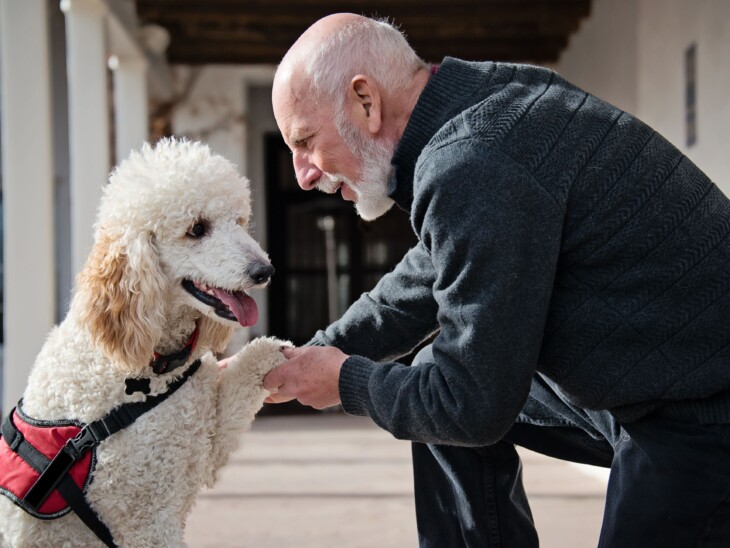
Source: Verywell Mind
2. Guide Dogs
Guide dogs for the blind. Help blind and visually impaired people to move outdoors and avoid obstacles, warn of obstacles on the way. In addition, dogs are trained to carry out basic commands, fetch and serve objects.
3. Hearing Service Dogs
Assistance dogs for deaf and hard of hearing people. Alert hosts to important sounds such as doorbells, fire alarms, phone or alarm rings. They can also work outside the home, alerting their owner to car horns, and sounding an alarm if someone calls the owner by name.
Does NOT apply to assistance dogs:
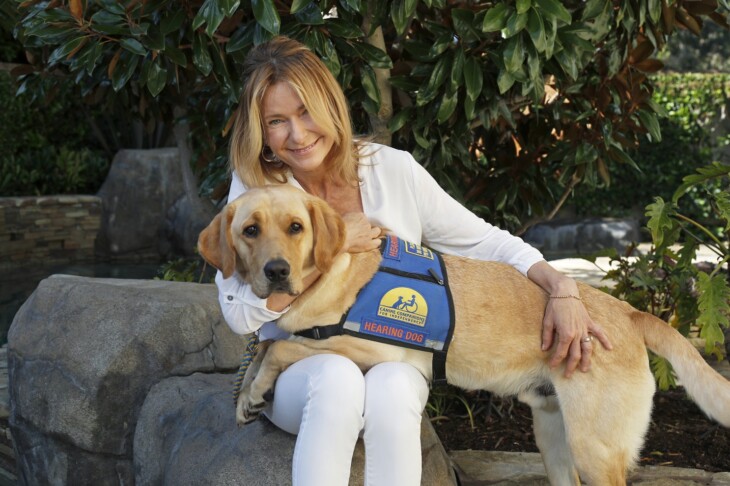
Source: Los Angeles Times
- Therapy Dogs – canine therapy dogs. Canistherapy is a method of rehabilitating people with the help of specially trained dogs for such diseases such as cerebral palsy, psychomotor developmental disorders, during recovery from a stroke, in the case of depression in children and adults, in the treatment of hospitalism and acute stress disorders, psychological trauma. Canine therapy dogs are successfully used for socialization and adaptation to everyday life of children and adults with various mental disorders: autism, Down syndrome. Such dogs can provide assistance in schools, hospitals, nursing homes, boarding schools, hospices, disaster areas.
- Medical Detection Dogs – diagnostic dogs. A number of studies have shown that dogs can successfully recognize prostate cancer, thyroid cancer, skin cancer by smell, and can identify people infected with malaria, even if symptoms have not yet appeared. Currently, diagnostic dogs are not used anywhere in medical practice. The only exception is Diabetes Alert Dog (clause 1.4.1).
- Emotional Support Animals– emotional support animals for people suffering from emotional disorders, anxiety disorders, serious depressive disorders, panic attacks. They are usually dogs, but sometimes they are cats or other animals. Emotional support animals do not receive specific training for physical assistance to humans and do not belong to the SERVICE DOG category, their task is emotional support.
- As can be seen from the presented classification, assistance dogs can provide assistance to very many people with various diseases. Their functions are often combined with each other and complement each other, for example, the same dog can perform the tasks of Mobility Service Dog (paragraph 1.1) + Wheelchair Assistance Dog (paragraph 1.2) + Medical Alert / Response Dog (paragraph 1.4).
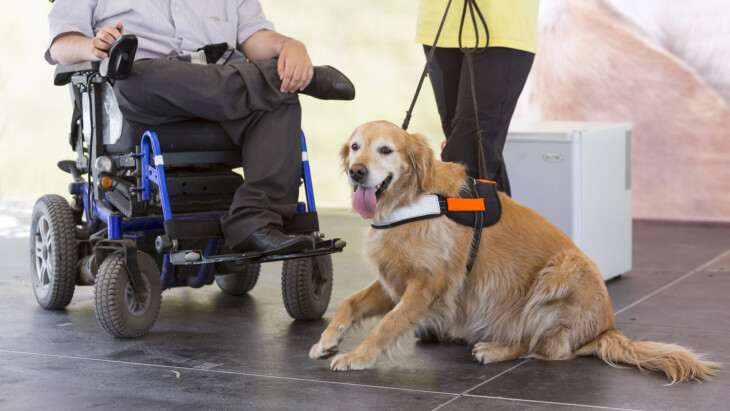
Source: Anything Pawsable
Conclusion
The detailed classification shows the full scale and relevance of the topic of assistance dogs.
The use of working assistance dogs for people with disabilities is a growing global trend.
